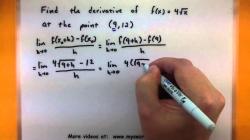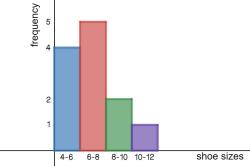What do input/output variables mean in math?
In mathematics, input and output variables are fundamental concepts used to describe the relationship between two quantities or sets of data. These terms are commonly used in functions and equations to signify how one set of values (the input) relates to another set of values (the output).
Input Variable:
- An input variable, often denoted as "x," is a value or quantity that you provide as an initial or independent value in a mathematical equation or function.
- It represents the data or information you input into a mathematical operation or function to obtain a result or output.
- Input variables are sometimes referred to as independent variables because their values can be chosen independently of the other variables in the problem.
Output Variable:
- An output variable, often denoted as "y," is the result or dependent value produced by a mathematical operation or function when you provide it with an input value.
- It represents the outcome, solution, or the value you are trying to find or analyze in relation to the given input.
- Output variables are sometimes referred to as dependent variables because their values depend on the values of the input variables and the function itself.
For example, in a simple linear equation such as:
y = 2x + 3
- "x" is the input variable. You can choose any value for "x" to input into the equation.
- "y" is the output variable. It represents the result you obtain when you use a specific value for "x" in the equation.
In more complex mathematical models or systems, there can be multiple input and output variables, and their relationships can be described using equations, functions, or mappings. Understanding the input-output relationship is crucial in various fields of mathematics, science, engineering, and data analysis, as it helps model and analyze how different factors influence one another and how changing the inputs affects the outcomes.
Understanding Input/Output Variables in Mathematics
Input and output variables are two of the most important concepts in mathematics. They are used in a wide range of mathematical topics, including functions, algorithms, and modeling.
An input variable is a variable that is used to produce an output variable. For example, in the function , the input variable is and the output variable is . The input variable is also known as the independent variable, and the output variable is also known as the dependent variable.
An output variable is a variable that is produced by an input variable. It is the result of applying a mathematical function to the input variable. For example, in the function , the output variable is . The output variable is also known as the dependent variable, because it depends on the value of the input variable.
Exploring the Role of Input and Output in Mathematical Functions
Input and output variables play a crucial role in mathematical functions. A function is a rule that assigns each input value to a unique output value. For example, in the function , the rule is to add 2 to the input value . The output value is the result of applying this rule to the input value .
Input and output variables can be used to represent many different things in the real world. For example, in the function , the input variable could represent time, and the output variable could represent distance. The slope of the function represents the rate of change, and the y-intercept represents the initial distance.
Input and Output Variables: Fundamentals and Applications
Input and output variables are used in a wide range of applications in mathematics. For example, they are used to solve equations, analyze graphs, and build mathematical models.
Here are a few examples of how input and output variables are used in mathematics:
- Solving equations: Input and output variables can be used to solve equations by substituting different values for the input variable and solving for the output variable. For example, to solve the equation for , we can substitute and solve for .
- Analyzing graphs: Input and output variables can be used to analyze graphs by interpreting the relationship between the input and output variables. For example, the slope of a line graph represents the rate of change of the output variable with respect to the input variable.
- Building mathematical models: Input and output variables can be used to build mathematical models of real-world phenomena. For example, we can use the function to model the relationship between time and distance in a linear motion problem.
Using Variables to Analyze Mathematical Relationships
Variables can be used to analyze mathematical relationships in a number of ways. For example, we can use variables to:
- Identify patterns: We can use variables to identify patterns in mathematical relationships. For example, we can use the variable to represent the input value and the variable to represent the output value in a function. By plotting the input and output values for different values of , we can identify patterns in the relationship between and .
- Make predictions: We can use variables to make predictions about mathematical relationships. For example, if we know the function that relates the input value to the output value , we can use this function to predict the output value for a given input value .
- Compare and contrast different relationships: We can use variables to compare and contrast different mathematical relationships. For example, we can use the variable to represent the input value and the variable to represent the output value in two different functions. By plotting the input and output values for different values of , we can compare and contrast the two relationships.
The Significance of Input/Output in Mathematical Modeling
Input and output variables are essential for mathematical modeling. Mathematical modeling is the process of using mathematics to represent and analyze real-world phenomena. When we build a mathematical model, we identify the input variables and output variables that are relevant to the phenomenon that we are modeling. We then use mathematical functions to relate the input variables to the output variables.
Once we have built a mathematical model, we can use it to make predictions about the phenomenon that we are modeling. For example, we can use a mathematical model of climate change to predict how the climate will change in the future.
Conclusion
Input and output variables are two of the most important concepts in mathematics. They are used in a wide range of mathematical topics, including functions, algorithms, and modeling. Understanding input and output variables is essential for solving mathematical problems, analyzing graphs, and building













